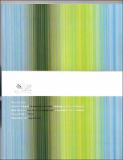THE PRAGMATICS RULES OF SPEECH ACTS IN THE DEATH CEREMONY “SAYUR MATUA” OF SIMALUNGUN CULTURE
Abstract
This article deals with the speech act used in communication which is happen in Death Ceremony “ Sayur Matua ” of Simalungun culture. This study tried to find out the speech act that occur during the communication among the speakers of four main group of participant that must come in the Death Ceremony “ Sayur Matua ”. They are the speaker of ceremony owner/woman’s taker (suhut), the speaker of woman giver (tondong), Speaker of Pargondrang (Batak Traditional Drummer) and the speaker of villager (dongan sahuta/sa sarikkat) in Simalungunese Death Ceremony “Sayur Matua”. The research methodology used in this study is qualitative approach.
The writer uses speech act theory by searly to analyze the data. The data is taken from 3 stage of ceremony conversation in Simalungunese Burial Ceremony “Sayur Matua”. First, Mangindo podah pakon marporsa (ask a piece of advice from the woman giver side). Second, Marsatti Gondrang (To start the Gondrang/Batak traditional drum). And the third, Martonggo raja (Discuss with the villager). To get the data, the writer reconds the utterances occurs in the ceremony by speaker of four main group of participants.
To get data, the writer writes what he sees, hears and records from the speech acts of Simalungun society that found on the Death Ceremony “ Sayur Matua ”.
Finally, based on the findings, the writer concludes all types of speech act speech act that occur during the communication among the speakers of four main group of participant that must come in the Death Ceremony “ Sayur Matua ”, they are illocutionary act 36.507 % followed by locutionary act 34.126 % and Perlocutionary Act 29.365 %, while the classification of the speech act found as Assertive ( 23,913 %), Directive (50%), Commissive (4,347%), Declarative (2,173 %), Expression (19,565 %).

